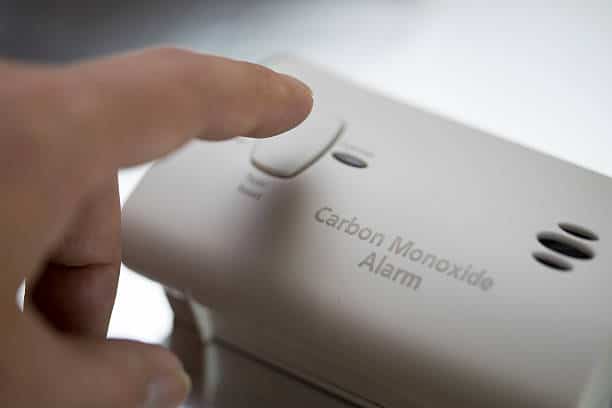According to the Journal of the American Medical Association, Carbon Monoxide (or CO) is the leading cause of accidental poisoning deaths in the U.S. Approximately 480 deaths occur annually due to Carbon Monoxide poisoning, with another 15,000 ER visits, many of which result in hospitalization, is reported by the Center for Disease Control (CDC).
Effects and Risks of Carbon Monoxide Poisoning
What is CO? Where does it come from? Carbon-Monoxide is a sneaky and toxic gas that has no tell-tale color or odor. It results from the incomplete burning of fossil fuels. The most common sources are furnaces, gas water heaters, fireplaces, gas ranges/grills, automobiles and portable generators.
Because Carbon Monoxide has no odor or color, it often goes unnoticed, striking victims off-guard, usually in their sleep. This is what makes CO so dangerous and earning it the name “Silent Killer.”
The effects of CO poisoning are very flu-like, and headaches, dizziness, confusion, weakness and chest pain are some of the more common symptoms. You may also experience an upset stomach and vomiting. Persons who are asleep can suffer from poisoning and even die without even knowing what is happening.
So, who’s at risk? Everyone. Because CO is inhaled, those with weaker respiratory systems, such as children and the elderly, are more susceptible to the effects of CO poisoning, but anyone can be overtaken without warning.
Protecting Your Family Against Carbon Monoxide
That leaves us with the question–How do we protect ourselves? First and foremost is to install battery-operated or battery back-up CO detectors. The National Fire Protection Agency recommends the detectors be placed in a few locations:
- Near the bedrooms so that you will be alerted if the alarm sounds
- On each level of the home
- Anywhere else required by local codes or laws
Make sure to check the battery and date every Spring and Fall when you set your clocks. CO detectors have a limited life span, generally 5-10 years, and need to be replaced if out of date.
Also, the CDC recommends taking these additional steps to keep your family and pets safe:
- Have your heating system, water heater, and any other gas, oil, or coal burning appliances serviced by a qualified technician every year, making sure your appliances are vented properly (there should be a slightly upward slant away from the equipment as the flue travels towards the outside). All joints should be tightly fitted.
- Do not use portable flameless chemical heaters indoors.
- Have your chimney checked and cleaned each year. Chimneys can become blocked with debits or nest from birds and animals causing the CO to build up in the house or cabin.
- Only allow qualified professionals repair vent pipes and fuel burning equipment.
- Do not use a gas range or oven for heating.
- Never use charcoal or gas grills indoors.
- Portable generators should never be used indoors, in basements, garages or within 20 of a window or door.
- Avoid warming your car or truck inside the garage.
Although anytime fuels are being burnt CO is being produced, the greatest time for risk of Carbon Monoxide poisoning is in the Winter and during severe weather events. During the winter we are burning more of the fuels that release CO as a by-product to keep warm. Regardless of your heating method, during an event where the standard source of warmth is compromised, such as a power outage, people will turn to unconventional methods to warm themselves. Even in good weather, if the power has gone out, the use of portable generators increases, thereby increasing the possibility of exposure.
What should you do if you hear a CO alarm?
- DO NOT IGNORE IT!
- Keep calm.
- Move outside immediately to fresh air.
- Call 911.
- Check and make sure everyone is accounted for.
- DO NOT REENTER. Notify the emergency responders if anyone missing.
If you have any questions about keeping your family safe from Carbon Monoxide, or need to schedule a visit to make sure your furnace is in top shape, the team at Southern Air Pros can help. Please give us a call–we’re happy to answer any questions to come out to have a look at your furnace.


